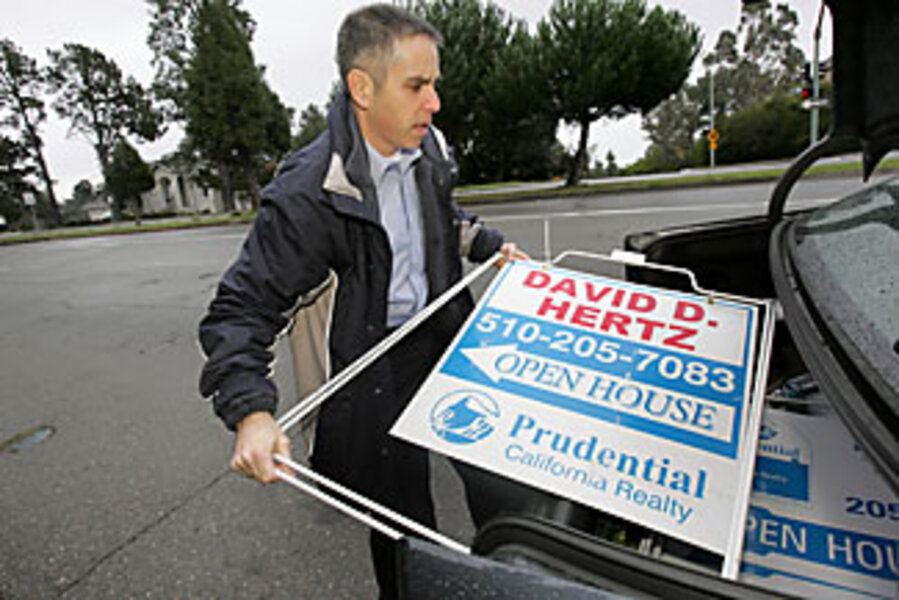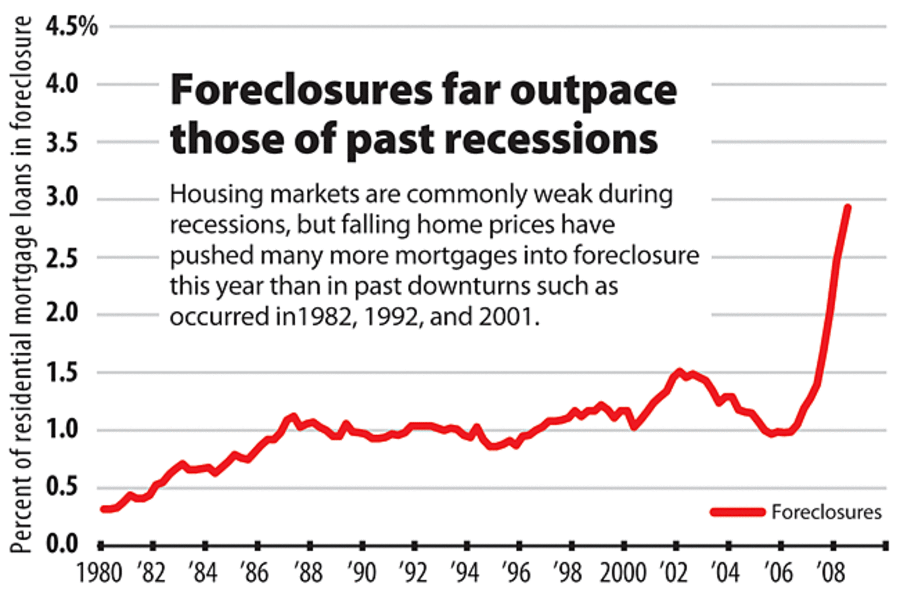Housing: More help may be needed
Loading...
A steady decline in US home prices shows no sign of ending – a pattern that promises to intensify the search for additional policies to heal the housing market.
Today, some two years after the housing market peaked, widening job losses mean that the downward momentum remains as strong as ever. On Tuesday, twin reports confirmed the trend. The sales volume of both new and previously owned homes dropped more than expected in November. The median price for preowned homes plunged 13 percent from a year before, the largest drop in records going back to 1968.
The wider economic impact of these housing woes is significant – more so than in typical recessions.
In response, policy makers are considering a larger role for government in two possible ways: as a partner in efforts to reduce foreclosures and as a guarantor of low interest rates for home buyers. But every proposed solution has drawbacks, and some economists say it's not clear that a big role for government would be a good thing.
"We're in a situation where the jobs and the incomes have to come first," not housing policy, says Saul Hymans, a University of Michigan economist. "Everything else follows from that."
Even many economists who favor new housing-market interventions agree that America's economic challenge has shifted significantly since the start of the year. Housing remains at the core of the distress that has roiled credit markets, but the economy's biggest issue is job losses.
That's why a big economic stimulus package – creating jobs and using the government's checkbook to offset consumer retrenchment – has moved to the top of President-elect Obama's agenda.
Still, the housing market is a big priority for many economists, including ones advising Mr. Obama. The Democratic-controlled Congress is also readying mortgage-related legislation.
It is even possible that new housing policies could come before Obama takes office, if the Bush administration requests the second half of a $700 billion financial rescue fund created this fall.
Democrats including Rep. Barney Frank (D) of Massachusetts insist that relief for homeowners must be part of any plan to use the next $350 billion in that fund, known as the Troubled Asset Relief Program (TARP).
With the federal loans that President Bush pledged to the auto industry last week, the first $350 billion in TARP funds has been largely committed.
"I … urge you in the strongest possible terms to use TARP funds immediately to support significant steps that can help stem the tidal wave of foreclosures threatening the stability of our financial system and our economy," Mr. Frank wrote in a letter to Treasury Secretary Henry Paulson last month.
By historical comparison, "tidal wave" is not an exaggeration. Foreclosures have reached levels not seen in past downturns since the 1930s.
The argument for new foreclosure prevention policies rests on the idea that foreclosures are a disruptive force – pushing a flood of homes onto the market at fire-sale prices.
Big losses due to foreclosure give banks an incentive to try to prevent them – and voluntary efforts have ramped up in the past year. But, with the vast majority of troubled loans now held by pools of investors, not individual banks, it has proved hard to slow the pace of foreclosures.
Sheila Bair, who heads the Federal Deposit Insurance Corp., recently said that after about 2 million foreclosures this year, the pace won't slow down on its own. "Over the next two years, an estimated 4 to 5 million mortgage loans will enter foreclosure if nothing is done," she told Congress.
Not all foreclosures can be prevented, nor can further declines in home prices. But by preventing as many as possible, the housing market might be stabilized at higher price levels than would otherwise occur. Since falling house prices are correlated with more loan defaults, this could stop a downward spiral from feeding on itself.
Ms. Bair has crafted a plan that has won favor with Frank and other Democrats. She suggests that the government encourage lenders to write down the principal balance on troubled loans. The incentive: the government shoulders half the risk of loss if home prices fall farther and the new loan defaults.
Other loan modification plans often leave homeowners with housing costs that are 38 percent or more of their income. Bair's plan hinges on bringing down the debt to income ratio to a more affordable 31 percent.
Many housing analysts laud the effort to bring mortgage payers into a positive equity position in their homes. But it's not clear how much this program would cost (Bair says just $24 billion) or whether it would prevent the 1.5 million foreclosures that Bair estimates.
A similar plan under way since October, called Hope for Homeowners, has gotten off to a slow start, notes Mr. Hymans in Michigan.
Many critics of intervention argue that, as hard as it is on banks and individuals, foreclosures are inevitable given the excesses of the housing bubble. Many people got big loans who shouldn't have. The best way to get the housing market working again, they argue, is to give buyers and lenders the confidence that the market will operate relatively free of government manipulation.
An alternative intervention, which has been gaining steam lately, seems simpler: have the government offer everyone a low mortgage rate of 4.5 percent for a 30-year loan.
This could reduce foreclosures indirectly, by spurring buyers and stabilizing home prices. It would put needed cash in consumer pockets.
But the government runs the risk of promising low-rate loans and then seeing its own borrowing costs rise from today's historically low Treasury rates.







